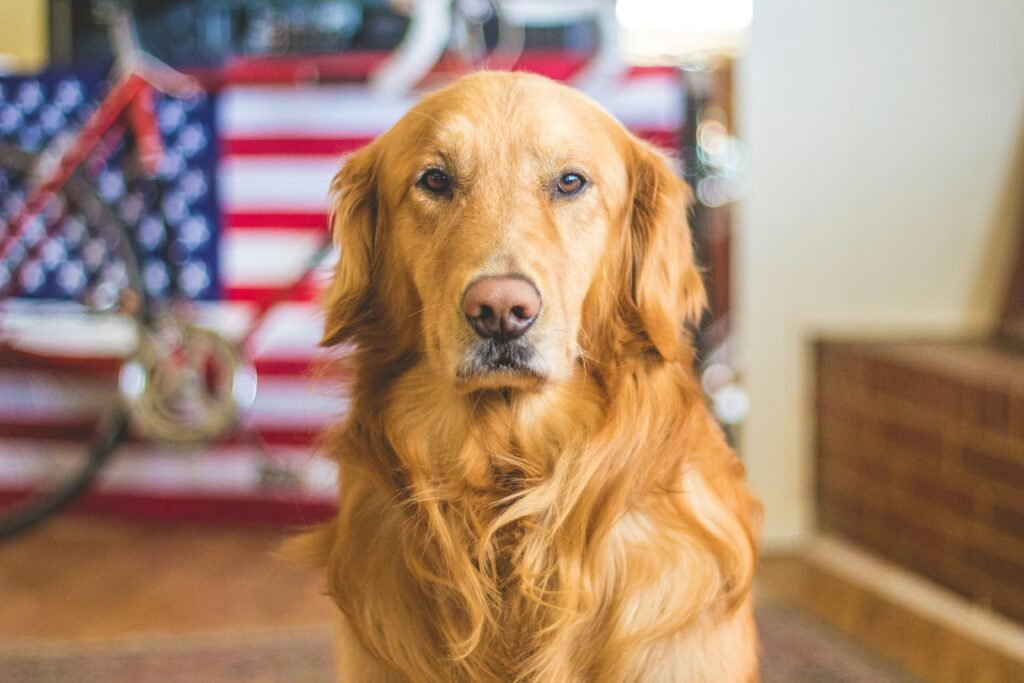Crate training your furry friend can be a breeze with these effective techniques. Whether you’re a seasoned pet owner or a first-timer, this article will guide you through the ins and outs of crate training. From creating a comfortable space to gradual introductions, you’ll discover how to make your pet’s crate a sanctuary they’ll love. Say goodbye to the stress and anxiety of crate training, and hello to a happy and content pup. Find out how to master the art of crate training in this article.

This image is property of images.unsplash.com.
Benefits of Crate Training
Provides a safe and secure space
Crate training provides your dog with a safe and secure space that they can call their own. The crate becomes their den, where they can retreat to when they need a break or when they feel overwhelmed. It gives them a sense of security and comfort, especially during stressful situations like thunderstorms or family gatherings. This safe space also helps to prevent accidents and destructive behavior when you’re unable to supervise your dog.
Helps with housebreaking
Crate training is an invaluable tool when it comes to housebreaking your dog. Dogs have a natural instinct to keep their den clean, so when you provide them with a crate that is the right size for them, they will be less likely to eliminate in it. The crate helps establish a routine and teaches them to hold their bladder and bowels until they are taken outside. This not only helps you maintain a clean home, but it also speeds up the housebreaking process.
Reduces separation anxiety
One of the most common behavioral issues in dogs is separation anxiety. This occurs when dogs become anxious and distressed when they are left alone. Crate training can help reduce separation anxiety by providing your dog with a familiar and secure space while you’re away. The crate becomes their safe haven, where they can feel calm and relaxed even when you’re not around. It gives them a sense of routine and predictability, which can greatly alleviate separation anxiety.
Facilitates travel with your dog
If you enjoy traveling with your canine companion, crate training is essential. Having your dog crate trained makes it easier to travel by car or airplane. It provides a familiar and secure space for them during the journey, reducing stress and ensuring their safety. Crate training also helps prevent your dog from getting into mischief or causing distractions while traveling. It’s a convenient way to keep your dog contained and comfortable during your adventures together.
Choosing the Right Crate
Size and dimensions
When choosing a crate for your dog, it’s crucial to consider their size and dimensions. The crate should be large enough for your dog to stand up, turn around, and lie down comfortably. However, it shouldn’t be too big, as this defeats the purpose of creating a den-like space. Using dividers or purchasing an adjustable crate can help accommodate your dog’s growth if they are a puppy. Consider your dog’s adult size and choose a crate that allows for proper movement while still feeling cozy.
Material and durability
Crates are available in different materials such as plastic, wire, or fabric. Each material has its advantages and considerations. Plastic crates are sturdy and provide more privacy, making them suitable for dogs who prefer enclosed spaces. Wire crates are well-ventilated and allow for better visibility, making them suitable for dogs who may feel claustrophobic. Fabric crates are lightweight and portable, ideal for travel purposes. Whatever material you choose, ensure it is durable and resistant to dog chewing or scratching.
Proper ventilation
Proper ventilation is crucial for your dog’s health and comfort while in the crate. Ensure that the crate you choose has adequate ventilation openings or mesh panels that allow for proper airflow. Good ventilation helps prevent your dog from overheating and ensures they have fresh air to breathe while inside the crate.
Easy to clean
Keeping your dog’s crate clean is essential for their health and hygiene. Choose a crate that is easy to clean and maintain. Look for removable trays or pans that can be easily taken out and cleaned. Additionally, opt for crates with smooth surfaces and minimal crevices where dirt and moisture can accumulate. A clean crate not only promotes good hygiene but also provides a pleasant environment for your dog.
Accessibility and door design
Consider the accessibility and door design of the crate before making your purchase. Look for crates with doors that open and close smoothly without the risk of getting stuck. Additionally, consider the number of doors and their placement. Having multiple doors can provide flexibility, especially when it comes to placing the crate in different areas of your home or during travel.

This image is property of images.unsplash.com.
Introducing the Crate to Your Dog
Make the crate comfortable
Before introducing your dog to the crate, make sure it is a comfortable and inviting space. Place a soft and cozy bed or blanket inside the crate for your dog to sleep on. You can also add their favorite toys or a chew bone to provide entertainment during crate time. Creating a positive and comfortable environment inside the crate will help your dog associate it with pleasant experiences.
Use positive reinforcement
When introducing the crate to your dog, use positive reinforcement to create a positive association. For example, you can place treats inside the crate and encourage your dog to enter and explore it. Praise and reward your dog when they willingly go inside the crate or show any signs of curiosity. This positive reinforcement helps your dog understand that the crate is a rewarding and safe space.
Associate crate with positive experiences
To further reinforce the positive association with the crate, associate it with enjoyable experiences for your dog. You can feed your dog their meals inside the crate, play interactive games near the crate, or give them special treats that they only receive when they’re in the crate. By making the crate a place where good things happen, your dog will begin to view it as a positive and desirable space.
Gradual introduction and desensitization
It’s important to introduce the crate to your dog gradually and at their own pace. Start by leaving the crate door open and allowing your dog to explore it freely without any pressure. Let them sniff and investigate the crate on their terms. Encourage them with treats and praise when they show curiosity or go inside the crate. As your dog becomes more comfortable, gradually start closing the crate door for short periods of time, gradually increasing the duration. This gradual introduction and desensitization process helps your dog become accustomed to the crate without feeling overwhelmed or anxious.
Creating a Positive Crate Training Routine
Establish a consistent schedule
Consistency is key when crate training your dog. Establishing a consistent schedule helps your dog understand when it’s time to go into the crate and when they’ll be let out. Set specific times for meals, potty breaks, and crate time. Dogs thrive on routine, so sticking to a consistent schedule will make the crate training process more effective and less confusing for your dog.
Use crate for short periods at first
When starting crate training, begin with short periods of crate time and gradually increase the duration. This allows your dog to adapt to being inside the crate without feeling overwhelmed or anxious. Start with just a few minutes and gradually work your way up to longer periods. It’s important to remember that crate time should not replace exercise or mental stimulation. Use the crate as a tool for rest and relaxation, ensuring your dog gets sufficient exercise and playtime outside of the crate.
Reward good behavior inside the crate
When your dog exhibits good behavior inside the crate, such as lying down calmly or chewing on a toy, be sure to reward them. Use treats, praise, or a favorite toy to show your dog that their good behavior is appreciated. This positive reinforcement encourages your dog to associate being calm and relaxed inside the crate with rewards, reinforcing the desired behavior.
Ignore attention-seeking or whining behavior
During the crate training process, your dog may try attention-seeking behaviors or whine to be let out. It’s important to ignore these behaviors and wait for a moment of silence or calmness before releasing your dog from the crate. Giving in to whining or attention-seeking behavior reinforces the idea that making noise or being persistent will grant them freedom. By practicing ignoring these behaviors, you reinforce the idea that being calm inside the crate leads to being let out.

This image is property of images.unsplash.com.
Dealing with Crate Anxiety or Fear
Identify the source of anxiety
If your dog shows signs of anxiety or fear when it comes to the crate, it’s essential to identify the source of their discomfort. It could be related to past negative experiences, lack of proper introduction, or simply feeling confined. By understanding the root cause of their anxiety, you can tailor your training approach to meet their specific needs.
Counter-conditioning techniques
Counter-conditioning involves changing your dog’s emotional response to the crate through positive associations. This can be done by associating the crate with pleasant experiences, such as using treats or toys to lure your dog inside and rewarding them when they enter willingly. Gradually increase the time your dog spends in the crate, always rewarding calm and relaxed behavior. Over time, your dog will start to view the crate as a positive and comforting space.
Seek professional help if necessary
If your dog’s crate anxiety or fear persists despite your best efforts, it may be beneficial to seek professional help from a certified dog trainer or behaviorist. They can assess your dog’s specific needs and develop a tailored training plan to help alleviate their anxiety. They may suggest additional techniques or provide guidance on how to modify your training approach to address your dog’s unique challenges.
Avoid using the crate as punishment
Using the crate as a form of punishment can create negative associations and worsen crate anxiety or fear. Never use the crate as a disciplinary tool. The crate should always be seen as a positive space where your dog feels safe and secure. Punitively confining your dog to the crate can lead to further anxiety and potential behavioral issues.
Teaching Your Dog to Enter and Exit the Crate
Using treats and positive reinforcement
When teaching your dog to enter and exit the crate on command, treats and positive reinforcement are valuable tools. Start by using a treat to lure your dog into the crate, saying a command such as “crate” or “go to your den.” When your dog enters the crate, praise them and give them the treat. Repeat this process multiple times until your dog begins to associate the command with entering the crate. For exiting, use a similar process, encouraging your dog to come out of the crate using a command like “come out” or “release.” Remember to reward and praise your dog for following the command.
Command training for entering and exiting
Consistency is key when it comes to command training for entering and exiting the crate. Once your dog has associated the commands with the desired actions, practice the commands regularly during crate training sessions. Use the commands consistently and reward your dog each time they follow the command correctly. With repetition and reinforcement, your dog will become proficient at entering and exiting the crate on command.
Gradually increase the duration of crate stays
As your dog becomes more comfortable with entering and exiting the crate, you can gradually increase the duration of their stays inside. Start with short periods, and gradually extend the time your dog spends in the crate. Remember to reward calm and quiet behavior during longer stays. This gradual increase in duration helps your dog build confidence and tolerance for being in the crate for extended periods, making it easier for them to adapt to situations like travel or overnight stays.
Troubleshooting Common Crate Training Issues
Excessive barking or whining
Excessive barking or whining can be a common issue during crate training. To address this, ensure that your dog’s needs are met before crating them. Take them for a potty break, provide exercise, and mental stimulation. If your dog continues to bark or whine while inside the crate, do not give in to their demands immediately. Wait for a moment of silence or calmness and then release your dog from the crate. Consistency and patience are key when addressing excessive vocalization.
Escape attempts or destructive behavior
If your dog attempts to escape from the crate or exhibits destructive behavior, it may be a sign of anxiety or a need for additional exercise and mental stimulation. Ensure that the crate is securely closed and that your dog cannot harm themselves while attempting to escape. Increase their exercise and playtime outside of the crate to help reduce excess energy. Additionally, provide interactive toys or puzzles to keep your dog mentally stimulated and distracted while inside the crate.
Tolerance for longer crate stays
Building your dog’s tolerance for longer crate stays requires gradual progress and positive reinforcement. Start by increasing the duration in small increments, rewarding calm and relaxed behavior. Gradually extend the time your dog spends in the crate, always monitoring their comfort level. If your dog becomes anxious or restless, shorten the duration and slowly work your way up again. With patience and consistency, your dog will develop the ability to tolerate longer periods of crate time.
Gradual elimination of crate dependence
Once your dog is fully crate trained, you may want to gradually eliminate their dependence on the crate by providing alternative safe spaces. This can be achieved by using baby gates or playpens to restrict access to certain areas while still allowing your dog freedom to move and explore. Gradually increase the supervised roaming time outside of the crate, observing your dog’s behavior and ensuring they do not exhibit anxiety or destructive behavior. This process should be done gradually and at your dog’s pace to avoid regression in their training progress.
Crate Training Do’s and Don’ts
Do: Make the crate a positive and inviting space
Ensure that the crate is a pleasant and comfortable environment for your dog. Use treats, toys, and praise to create a positive association with the crate. Make it a place of rest and relaxation where your dog feels safe and secure.
Do: Use appropriate crate size
Choose a crate that is appropriate for your dog’s size and provides enough space for them to move comfortably. A crate that is too small may make your dog feel confined, while one that is too large may not provide the sense of security needed for crate training.
Don’t: Leave your dog in the crate for excessive periods
While crate training is beneficial, leaving your dog in the crate for extended periods can lead to anxiety and frustration. Dogs need regular exercise, mental stimulation, and social interaction. Use the crate as a tool for rest and relaxation, ensuring your dog gets sufficient time outside of the crate to be active and engaged.
Don’t: Use the crate as a punishment
Using the crate as a form of punishment can create negative associations and hinder the crate training process. The crate should always be a positive and safe space for your dog. Avoid confining your dog to the crate as a disciplinary measure, as this can lead to anxiety and a negative perception of the crate.
Transitioning from Crate to Freedom
Gradual increase in supervised roaming
Once your dog is comfortable and well-trained in the crate, you can begin to introduce supervised roaming time outside of the crate. Start by allowing short periods of monitored freedom in a designated area, gradually increasing the duration as your dog demonstrates good behavior and reliability. This gradual transition helps your dog adapt to being outside of the crate while still maintaining a structured and controlled environment.
Monitoring behavior during freedom
While transitioning from the crate to freedom, it’s important to closely monitor your dog’s behavior for any signs of mischief or accidents. Keep an eye out for destructive behavior, excessive barking, or attempts to eliminate in inappropriate areas. If any issues arise, it may be necessary to restrict freedom temporarily and reinforce crate training or additional training exercises.
Utilizing baby gates or playpens
To provide your dog with a space to roam while still maintaining control and safety, utilize baby gates or playpens. These barriers can confine your dog to certain areas of the house, ensuring they cannot access off-limits areas or cause any damage. This allows your dog to gradually explore their surroundings while still providing boundaries and supervision.
Ensuring a safe and dog-proofed environment
When transitioning your dog from the crate to freedom, it’s essential to ensure a safe and dog-proofed environment. Remove any hazards or items that may be tempting for your dog to chew on or ingest. Secure wires, toxic plants, and small objects that can pose a danger. This proactive approach promotes a safe and positive experience for your dog during their newfound freedom.
Consistency and Patience
Set realistic expectations
Crate training is a process that requires time, patience, and consistency. Set realistic expectations for your dog’s progress and understand that every dog learns at their own pace. Some dogs may quickly adapt to the crate, while others may require more time and guidance. Be patient and celebrate small victories along the way.
Be consistent with training methods
Consistency is key when it comes to crate training. Use the same commands, routines, and positive reinforcement techniques consistently. This helps your dog understand what is expected of them and reinforces the desired behavior. Consistency also prevents confusion and creates a structured training environment.
Exercise patience and understanding
Crate training can be challenging at times, but it’s important to exercise patience and understanding throughout the process. Your dog may have setbacks or moments of anxiety, and it’s crucial to provide support and reassurance. Be gentle, calm, and encouraging during crate training sessions, and remember that each step forward is progress.
Celebrate progress and small victories
As you and your dog progress through the crate training journey, celebrate each milestone and small victory. Whether it’s your dog willingly entering the crate or staying calm for an extended period, acknowledge their efforts and reward them. Celebrating progress helps motivate both you and your dog, creating a positive and enjoyable training experience.



